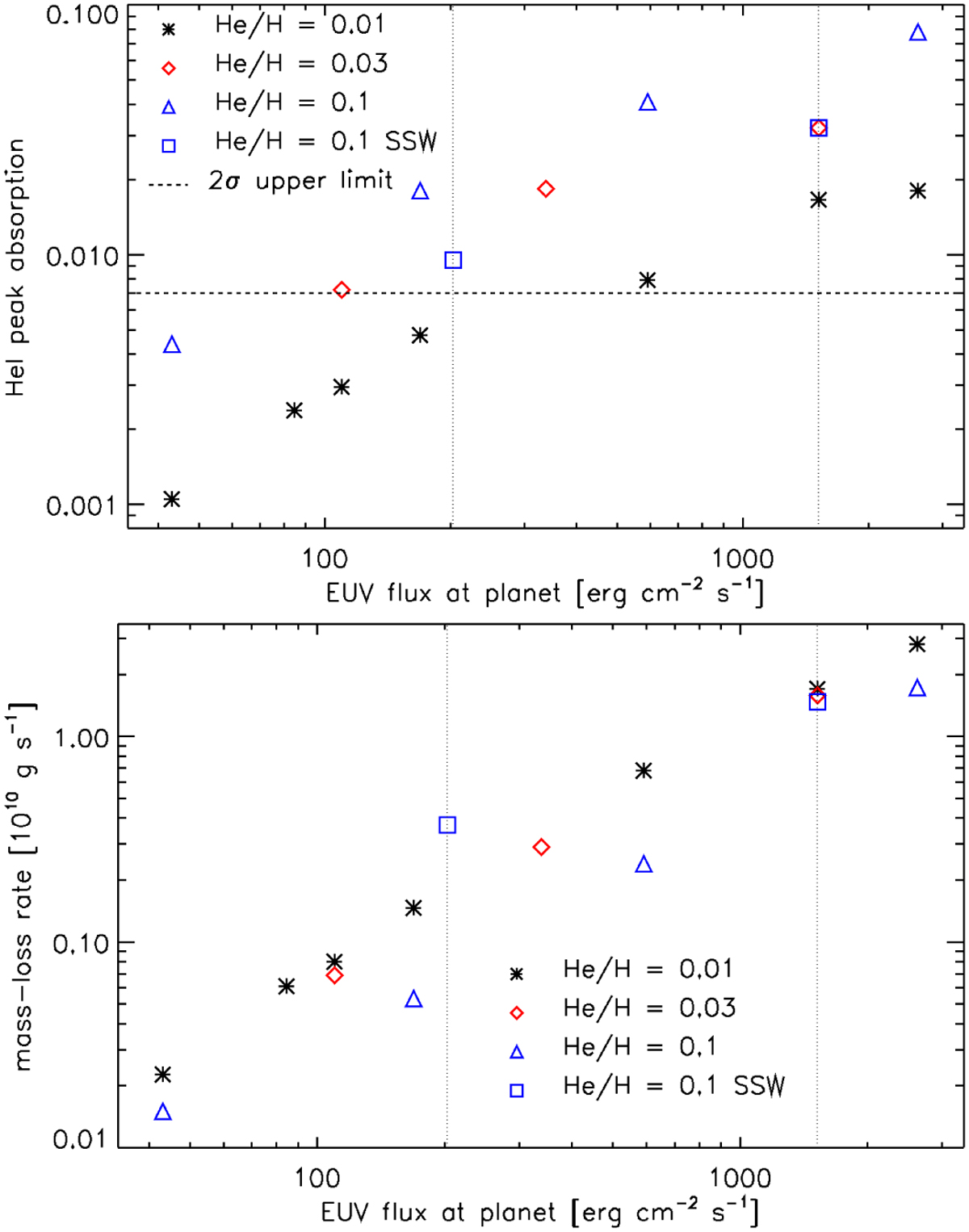Fig. 4

Download original image
Summary of the results of the hydrodynamic simulations. Top: peak absorption of the He I (23S) triplet resulting from the HD simulations as a function of the stellar EUV emission at the planetary orbital separation, assuming He/H abundance ratios of 0.01 (black asterisks), 0.03 (red rhombs), and 0.1 (blue triangles) and a stellar wind mass-loss rate of 1011 g s−1. The blue squares are for a He/H abundance ratio of 0.1 and a stronger stellar wind of 2×1013 g s−1. The horizontal dashed line marks the 2σ upper limit derived from the observations. The vertical dotted lines correspond to the low and high values of the EUV flux obtained following the reanalysis of the X-ray data and the scaling relations of Poppenhaeger (2022). Bottom: Same as the top panel, but for the planetary mass-loss rate.
Current usage metrics show cumulative count of Article Views (full-text article views including HTML views, PDF and ePub downloads, according to the available data) and Abstracts Views on Vision4Press platform.
Data correspond to usage on the plateform after 2015. The current usage metrics is available 48-96 hours after online publication and is updated daily on week days.
Initial download of the metrics may take a while.


